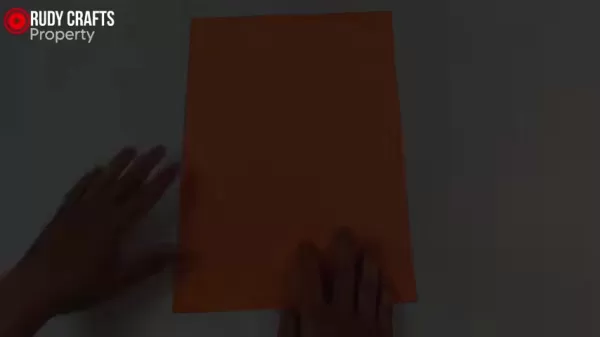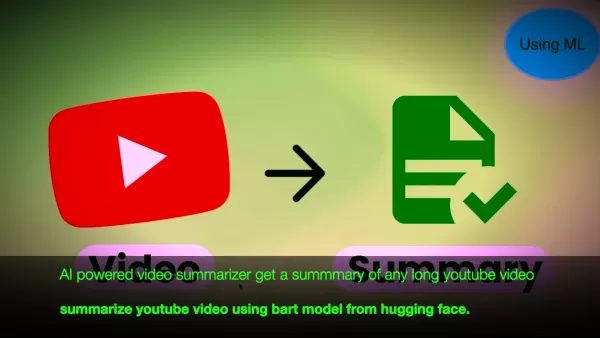Master Paper Airplane Art: Learn to Craft Top-Flying Designs
Unleash Your Inner Aeronautical Engineer: The Fascinating World of Paper Airplane Design
Folding paper airplanes isn’t just child’s play—it’s a fusion of art, science, and engineering. Whether you’re after a fun activity, prepping for a competition, or simply looking to impress your friends, mastering the craft of paper airplane creation is incredibly rewarding. This guide will walk you through the essential steps, folding techniques, and expert tips to design and build the best flying paper airplanes. Get ready to take off!

Getting Started: Essential Folds for Paper Airplanes
The journey to crafting exceptional paper airplanes starts with choosing the right materials and mastering basic folding techniques. The type of paper you select plays a huge role in how your airplane performs.
- Lightweight Paper: Allows for longer flight times.
- Heavier Paper: Offers stability in windy conditions.
Experiment with different paper weights to find the perfect balance for your desired flight performance. Common options include:
- Standard Printer Paper: Versatile and beginner-friendly.
- Construction Paper: More durable with a variety of color options.
- Cardstock: Sturdy and ideal for advanced designs.
Key Folds for Paper Airplanes
- Valley Fold: Crease the paper with the fold pointing downward.
- Mountain Fold: Crease the paper with the fold pointing upward.
- Symmetry: Crucial for balanced flight. Uneven sides lead to uneven lift, causing the plane to spiral and crash.
- Accuracy: Precision ensures optimal aerodynamics. Small misalignments can drastically affect the flight path.
Step-by-Step Guide: Folding a Classic Dart Paper Airplane
The classic dart is a timeless design known for its simplicity and speed. Follow these steps to create your very own dart airplane.
- Center Fold: Fold the paper in half lengthwise, creating a crisp crease. Unfold it.
- Top Corners to Center: Fold the top two corners toward the center crease to form a pointed top.
- Fold Again: Fold the new top corners toward the center crease once more, sharpening the point.
- Fold in Half: Bring the entire airplane back to its original center fold, with the folds facing outward.
- Create Wings: Fold down each wing symmetrically, aligning them with the body.
- Adjustments: Tweak the wings for balance and symmetry.
With practice, you’ll be whipping up dart airplanes in no time, ready for high-speed launches!
Advanced Techniques: Elevating Your Paper Airplane Game
Once you’ve nailed the basics, dive into advanced techniques to enhance your airplane’s flight performance.
- Winglets: Small flaps at the wingtips reduce drag and improve stability. Perfect for dart-shaped planes!
- Ailerons: Hinged surfaces on the trailing edge of the wings allow for roll control. Use them to perform tricks like barrel rolls.
- Rudder: A vertical fin at the rear controls yaw (direction). Adjust it to steer your plane left or right.
- Dihedral: An upward angle of the wings increases stability. It’s a hallmark of modern aircraft design.
These techniques work best with thicker paper like cardstock or construction paper. Incorporating them can transform your planes into high-performance marvels.
Optimizing Performance: Adjustments and Trimming
Even the most meticulously folded airplane might need tweaks for peak performance. Small adjustments can make all the difference.
- Wing Alignment: Ensure both wings are symmetrical and aligned with the body.
- Weight Distribution: Add paper clips or tape to the nose or tail to stabilize the plane.
- Surface Smoothing: Remove any wrinkles or creases to prevent airflow disruptions.
- Test Flights: Observe your plane’s behavior in a controlled setting to identify improvements.
Conduct test flights to dial in your design before taking it public.
Paper Airplane Design and Customization
Designing paper airplanes is both an art and a science. Combine aerodynamic principles with creativity to create planes that are functional and visually appealing.
- Experiment with Folds: Try different techniques to achieve varied flight characteristics.
- Customize Materials: Use colored paper, cardstock, or lightweight cardboard for unique designs.
- Balance: Equalize wing weight for consistent flight.
- Aerodynamics: Streamline your design for maximum speed, stability, and range.
The Art of Launching: Achieving Optimal Flight Trajectory
Launching a paper airplane requires finesse and precision. The angle and force of your throw determine distance, accuracy, and stability.
- Angle: Experiment with upward angles for maximum distance.
- Force: Use a smooth, consistent throw. Avoid jerky motions.
- Grip: Hold the plane firmly yet gently to avoid deforming it.
- Environment: Factor in wind conditions to optimize your launch.
Practice in various environments to refine your technique.
Pros and Cons of Different Paper Airplane Types
Type Pros Cons Classic Dart Simple design, good for distance Poor design can lead to poor flight Advanced Aerobatic Great for tricks and stunts Complexity requires skill
Frequently Asked Questions
- What paper flies the farthest? Lightweight paper is ideal for maximizing flight time.
- Is this just child’s play? Far from it! The physics behind paper airplanes is surprisingly complex.
- What’s the best design? It depends on your goal. Darts are great for distance, while aerobatic designs require thicker paper and advanced techniques.
Troubleshooting Common Problems
Even the best-designed planes can face issues. Here’s how to fix them:
- Diving: Nose-heavy? Add weight to the tail.
- Stalling: Tail-heavy? Add weight to the nose.
- Veering: Misaligned wings? Adjust them for symmetry.
- Spinning: Asymmetry? Inspect and adjust.
Sometimes, starting over is the easiest solution.
Related article
 AI-Powered Cover Letters: Expert Guide for Journal Submissions
In today's competitive academic publishing environment, crafting an effective cover letter can make the crucial difference in your manuscript's acceptance. Discover how AI-powered tools like ChatGPT can streamline this essential task, helping you cre
AI-Powered Cover Letters: Expert Guide for Journal Submissions
In today's competitive academic publishing environment, crafting an effective cover letter can make the crucial difference in your manuscript's acceptance. Discover how AI-powered tools like ChatGPT can streamline this essential task, helping you cre
 US to Sanction Foreign Officials Over Social Media Regulations
US Takes Stand Against Global Digital Content Regulations
The State Department issued a sharp diplomatic rebuke this week targeting European digital governance policies, signaling escalating tensions over control of online platforms. Secretary Marco
US to Sanction Foreign Officials Over Social Media Regulations
US Takes Stand Against Global Digital Content Regulations
The State Department issued a sharp diplomatic rebuke this week targeting European digital governance policies, signaling escalating tensions over control of online platforms. Secretary Marco
 Ultimate Guide to AI-Powered YouTube Video Summarizers
In our information-rich digital landscape, AI-powered YouTube video summarizers have become indispensable for efficient content consumption. This in-depth guide explores how to build a sophisticated summarization tool using cutting-edge NLP technolog
Comments (1)
0/200
Ultimate Guide to AI-Powered YouTube Video Summarizers
In our information-rich digital landscape, AI-powered YouTube video summarizers have become indispensable for efficient content consumption. This in-depth guide explores how to build a sophisticated summarization tool using cutting-edge NLP technolog
Comments (1)
0/200
![StevenGreen]() StevenGreen
StevenGreen
 October 6, 2025 at 12:30:35 PM EDT
October 6, 2025 at 12:30:35 PM EDT
Nunca pensé que hacer aviones de papel podía ser tan complejo 😮 Me pregunto si estos diseños realmente vuelan mejor o si es solo por diversión. ¡Tendré que probar algunos este fin de semana!


 0
0
Unleash Your Inner Aeronautical Engineer: The Fascinating World of Paper Airplane Design
Folding paper airplanes isn’t just child’s play—it’s a fusion of art, science, and engineering. Whether you’re after a fun activity, prepping for a competition, or simply looking to impress your friends, mastering the craft of paper airplane creation is incredibly rewarding. This guide will walk you through the essential steps, folding techniques, and expert tips to design and build the best flying paper airplanes. Get ready to take off!

Getting Started: Essential Folds for Paper Airplanes
The journey to crafting exceptional paper airplanes starts with choosing the right materials and mastering basic folding techniques. The type of paper you select plays a huge role in how your airplane performs.
- Lightweight Paper: Allows for longer flight times.
- Heavier Paper: Offers stability in windy conditions.
Experiment with different paper weights to find the perfect balance for your desired flight performance. Common options include:
- Standard Printer Paper: Versatile and beginner-friendly.
- Construction Paper: More durable with a variety of color options.
- Cardstock: Sturdy and ideal for advanced designs.
Key Folds for Paper Airplanes
- Valley Fold: Crease the paper with the fold pointing downward.
- Mountain Fold: Crease the paper with the fold pointing upward.
- Symmetry: Crucial for balanced flight. Uneven sides lead to uneven lift, causing the plane to spiral and crash.
- Accuracy: Precision ensures optimal aerodynamics. Small misalignments can drastically affect the flight path.
Step-by-Step Guide: Folding a Classic Dart Paper Airplane
The classic dart is a timeless design known for its simplicity and speed. Follow these steps to create your very own dart airplane.
- Center Fold: Fold the paper in half lengthwise, creating a crisp crease. Unfold it.
- Top Corners to Center: Fold the top two corners toward the center crease to form a pointed top.
- Fold Again: Fold the new top corners toward the center crease once more, sharpening the point.
- Fold in Half: Bring the entire airplane back to its original center fold, with the folds facing outward.
- Create Wings: Fold down each wing symmetrically, aligning them with the body.
- Adjustments: Tweak the wings for balance and symmetry.
With practice, you’ll be whipping up dart airplanes in no time, ready for high-speed launches!
Advanced Techniques: Elevating Your Paper Airplane Game
Once you’ve nailed the basics, dive into advanced techniques to enhance your airplane’s flight performance.
- Winglets: Small flaps at the wingtips reduce drag and improve stability. Perfect for dart-shaped planes!
- Ailerons: Hinged surfaces on the trailing edge of the wings allow for roll control. Use them to perform tricks like barrel rolls.
- Rudder: A vertical fin at the rear controls yaw (direction). Adjust it to steer your plane left or right.
- Dihedral: An upward angle of the wings increases stability. It’s a hallmark of modern aircraft design.
These techniques work best with thicker paper like cardstock or construction paper. Incorporating them can transform your planes into high-performance marvels.
Optimizing Performance: Adjustments and Trimming
Even the most meticulously folded airplane might need tweaks for peak performance. Small adjustments can make all the difference.
- Wing Alignment: Ensure both wings are symmetrical and aligned with the body.
- Weight Distribution: Add paper clips or tape to the nose or tail to stabilize the plane.
- Surface Smoothing: Remove any wrinkles or creases to prevent airflow disruptions.
- Test Flights: Observe your plane’s behavior in a controlled setting to identify improvements.
Conduct test flights to dial in your design before taking it public.
Paper Airplane Design and Customization
Designing paper airplanes is both an art and a science. Combine aerodynamic principles with creativity to create planes that are functional and visually appealing.
- Experiment with Folds: Try different techniques to achieve varied flight characteristics.
- Customize Materials: Use colored paper, cardstock, or lightweight cardboard for unique designs.
- Balance: Equalize wing weight for consistent flight.
- Aerodynamics: Streamline your design for maximum speed, stability, and range.
The Art of Launching: Achieving Optimal Flight Trajectory
Launching a paper airplane requires finesse and precision. The angle and force of your throw determine distance, accuracy, and stability.
- Angle: Experiment with upward angles for maximum distance.
- Force: Use a smooth, consistent throw. Avoid jerky motions.
- Grip: Hold the plane firmly yet gently to avoid deforming it.
- Environment: Factor in wind conditions to optimize your launch.
Practice in various environments to refine your technique.
Pros and Cons of Different Paper Airplane Types
| Type | Pros | Cons |
|---|---|---|
| Classic Dart | Simple design, good for distance | Poor design can lead to poor flight |
| Advanced Aerobatic | Great for tricks and stunts | Complexity requires skill |
Frequently Asked Questions
- What paper flies the farthest? Lightweight paper is ideal for maximizing flight time.
- Is this just child’s play? Far from it! The physics behind paper airplanes is surprisingly complex.
- What’s the best design? It depends on your goal. Darts are great for distance, while aerobatic designs require thicker paper and advanced techniques.
Troubleshooting Common Problems
Even the best-designed planes can face issues. Here’s how to fix them:
- Diving: Nose-heavy? Add weight to the tail.
- Stalling: Tail-heavy? Add weight to the nose.
- Veering: Misaligned wings? Adjust them for symmetry.
- Spinning: Asymmetry? Inspect and adjust.
Sometimes, starting over is the easiest solution.
 AI-Powered Cover Letters: Expert Guide for Journal Submissions
In today's competitive academic publishing environment, crafting an effective cover letter can make the crucial difference in your manuscript's acceptance. Discover how AI-powered tools like ChatGPT can streamline this essential task, helping you cre
AI-Powered Cover Letters: Expert Guide for Journal Submissions
In today's competitive academic publishing environment, crafting an effective cover letter can make the crucial difference in your manuscript's acceptance. Discover how AI-powered tools like ChatGPT can streamline this essential task, helping you cre
 US to Sanction Foreign Officials Over Social Media Regulations
US Takes Stand Against Global Digital Content Regulations
The State Department issued a sharp diplomatic rebuke this week targeting European digital governance policies, signaling escalating tensions over control of online platforms. Secretary Marco
US to Sanction Foreign Officials Over Social Media Regulations
US Takes Stand Against Global Digital Content Regulations
The State Department issued a sharp diplomatic rebuke this week targeting European digital governance policies, signaling escalating tensions over control of online platforms. Secretary Marco
 Ultimate Guide to AI-Powered YouTube Video Summarizers
In our information-rich digital landscape, AI-powered YouTube video summarizers have become indispensable for efficient content consumption. This in-depth guide explores how to build a sophisticated summarization tool using cutting-edge NLP technolog
Ultimate Guide to AI-Powered YouTube Video Summarizers
In our information-rich digital landscape, AI-powered YouTube video summarizers have become indispensable for efficient content consumption. This in-depth guide explores how to build a sophisticated summarization tool using cutting-edge NLP technolog
 October 6, 2025 at 12:30:35 PM EDT
October 6, 2025 at 12:30:35 PM EDT
Nunca pensé que hacer aviones de papel podía ser tan complejo 😮 Me pregunto si estos diseños realmente vuelan mejor o si es solo por diversión. ¡Tendré que probar algunos este fin de semana!


 0
0





























